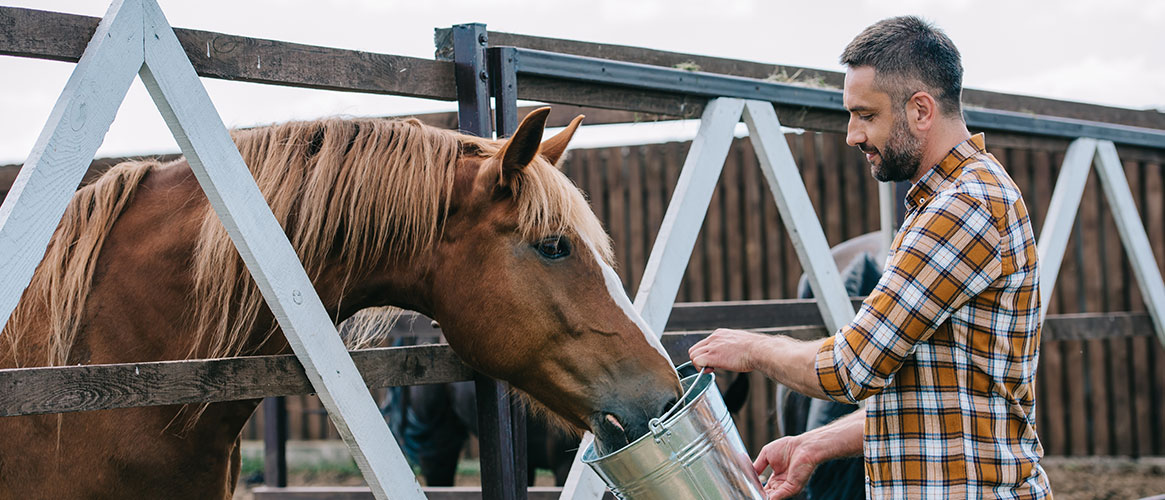Workers in farming, veterinary, and animal services industries may handle animals as a part of their job duties. The types of animals may vary, but workers should get training on their potential hazards and safe handling techniques. Animal hazards may include injuries due to sudden animal movements, bites and scratches, and zoonotic diseases (also known as zoonoses), a disease spread from animals to humans.
What your employees need to know about working with animals
Animal handling techniques should be taught to inexperienced workers and used consistently by everyone. Generally, slow and deliberate movements should be used around animals. Workers should approach animals from the front and avoid their blind spots and the “kick zone” behind cattle and horses. Cornering, teasing, poking, or needlessly hurting animals can cause them to react violently.
Animal behavior can be unpredictable; therefore, workers should remain constantly alert when handling them. Workers should watch for warning signs of animal aggressiveness and fear. These vary with animal breeds, but may include raised fur, flattened ears, twitching tails, or bared teeth. If possible, workers should avoid handling these animals until they are in a calmer state. Some herd animals may be calmer when handled in small groups.
What your employees need to do when working with animals
Aggressive (or sick) animals and their pens should be labeled to ensure that everyone uses extra caution around them. If workers must capture animals or administer treatments that may cause pain, they should do so with assistance from animal capture devices and/or other workers. Workers should use extreme caution when giving injections and handling sharps around animals; sudden animal movements could cause a stick injury.
When capturing or handling a tethered animal, workers should practice good ergonomics by keeping their backs straight and their joints “soft.” This can prevent injury and a “whiplash” effect if the animal moves suddenly. If an animal begins thrashing around too violently to safely control, the handler should release the animal if it is safe to do so. Additional restraints or help may be needed to handle that animal safely. It is advisable to keep an open route of escape when working with animals.
For safety on the job, workers need protective footwear with non-slip soles, sturdy clothing, and gloves. The potential for zoonoses varies depending on the animal breed, but is generally caused by dirty hands or inhalation of contaminated dusts. Frequent hand washing is the best defense against diseases caused by touching animal saliva and wastes. Other personal protective equipment includes:
- Eyewear – Safety goggles or glasses to protect against anything that may come in contact with the eyes.
- Respirators – to protect against diseases transmitted by breathing contaminated farm and field dusts.
If an employee is injured by an animal or potentially exposed to a diseased animal, they need to seek medical attention immediately and report the incident to management as soon as possible.
What to cover at your safety meeting on working with animals
Demonstrate the animal handling techniques your employees should use. As mentioned above this includes moving slowly and deliberately and approaching the animals from the front.
Remind your employees that animals can move suddenly and unexpectedly, so it’s important to always be alert.
Review your processes for giving injections and using animal restraints. Also remember to discuss the importance of proper PPE, using good ergonomics and what to do if an employee is injured.
Work with your employees to better understand the animals they work with and how to properly care for them. Not only does this make things easier on the animals but helps your workers stay safe on the job.

